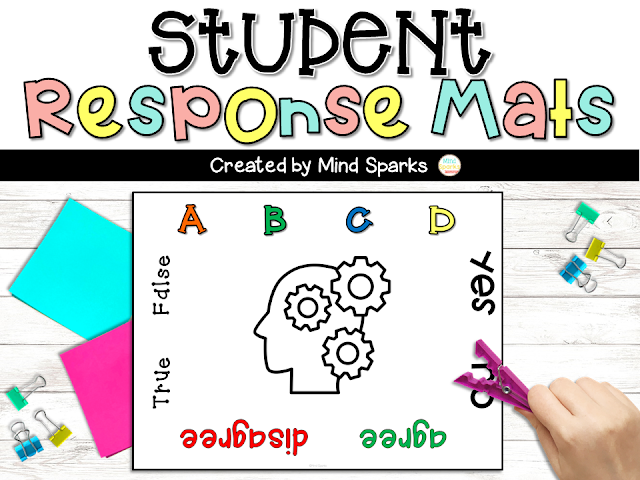When teachers utilize opportunities to respond (OTRs) in their classroom students achieve at higher levels, process information deeply and retain knowledge more effectively.
OTRs is a teaching technique that encourages student participation and engagement for all students. There are three types of OTRs teachers can use---getting kids to say things, write things and do things.
Despite its potential benefits, however, there are common mistakes that educators might inadvertently make when implementing OTR strategies. Let's explore some of these mistakes, so we can avoid them!
Mistake 1: Limited Variation in Question Types
Research has consistently emphasized the importance of varying question types to cater to diverse learning styles and abilities. Unfortunately, some teachers might fall into the trap of using a limited set of question types, such as closed-ended questions that require only brief responses.
To enhance student engagement, educators should diversify their questioning techniques, incorporating open-ended questions, probing queries, and reflective prompts.
Check out some of these video examples from The Classroom Check-Up!
Or, checkout these Blooms Taxonomy Question Cards which have over 8 pages of question prompts to ask your students!
Mistake 2: Unequal Student Participation
In many classrooms, certain students may dominate discussions while others remain silent. This uneven distribution of participation can hinder a collaborative learning environment. Teachers may unintentionally contribute to this dynamic by consistently directing questions to a select group of students.
Check out this article from Edutopia which gives some GREAT ideas on how to get ALL students participating!
Response cards, Hold Ups and Response Mats are another great tool to get every student engaged. Check out this robust package for under four dollars! Or, download the freebie mat by clicking here.
Mistake 3: Insufficient Wait Time
Wait time, is a critical factor in increasing student achievement. Some educators, however, may inadvertently provide insufficient wait time, hindering students' ability to formulate thoughtful responses.
In fact, on average, most teachers only provide approximately 1 second of wait time between asking a question and allowing a student to respond.
- increasing the length of student responses
- increasing the number of unsolicited appropriate responses
- increasing responses from students categorized as low performing
- increasing student to student interactions
- increases in student achievement
- more thoughtful and contemplative answers
- decreases in students not responding or saying, "I don't know."
- decreases in discipline problems
Opportunities to respond are powerful tools that can enhance student engagement, critical thinking, and overall learning experiences. By being mindful of common mistakes, teachers can harness the full potential of OTR strategies.










